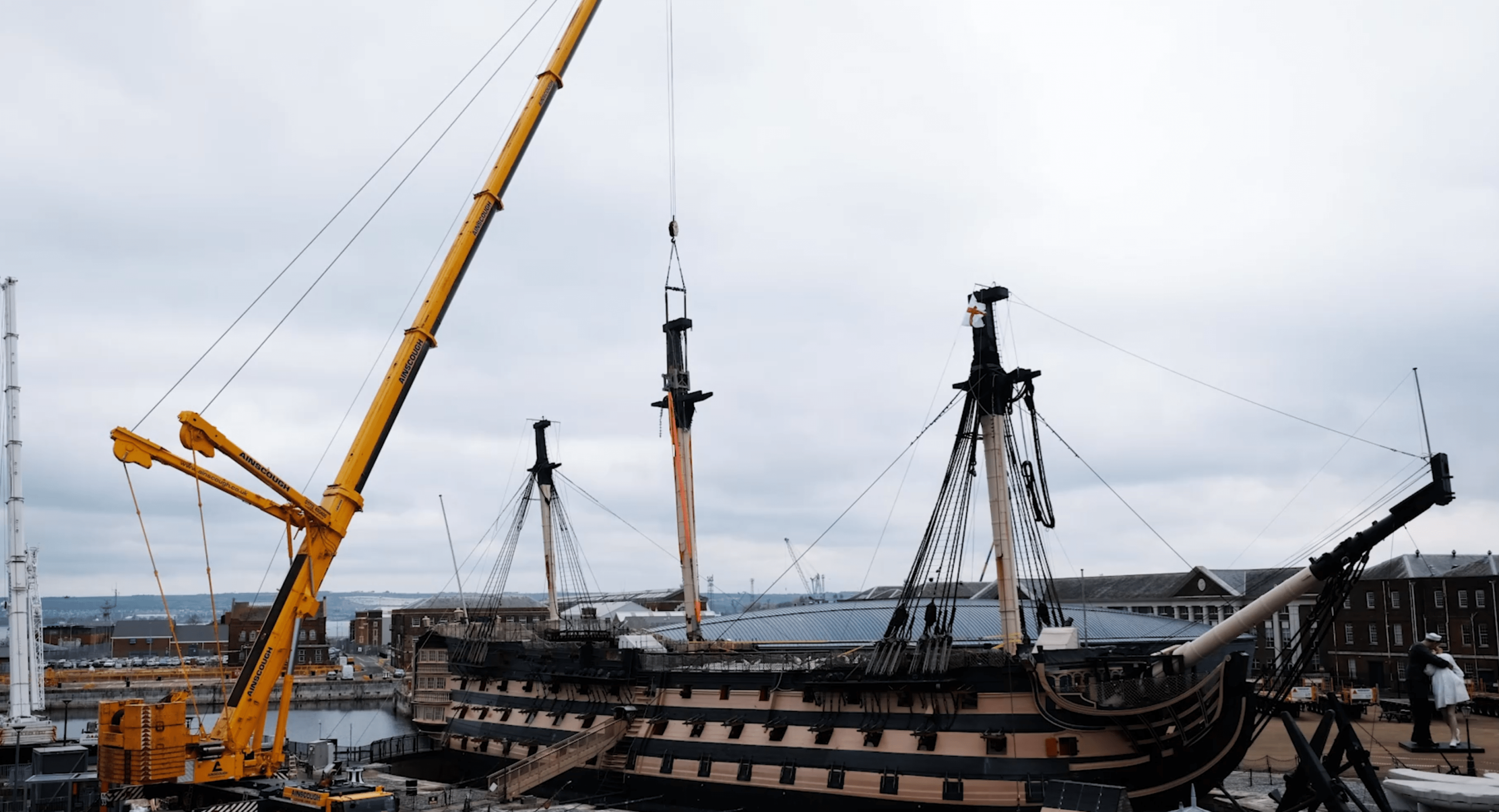As were all calculations about the weather. Many go-dates were to pass until at last the time and above all the wind, were just right. Almost no breeze could be tolerated, because if the mainmast began to swing like a pendulum as it was drawn out from Victory, disaster movie scenes would ensue – not least because it would be well-nigh impossible to stop it once it started, threatening the ship and all around her. As with all work on Victory, all involved were well acquainted with the simple fact governing all work on her – she is unique, irreplaceable and not just a British but a world heritage treasure. So the spirit of her restoration is a curious combination of brute strength – reflecting the brute strength it took to build her – and the utmost delicacy needed to preserve and protect her.
WIND BE STILL






